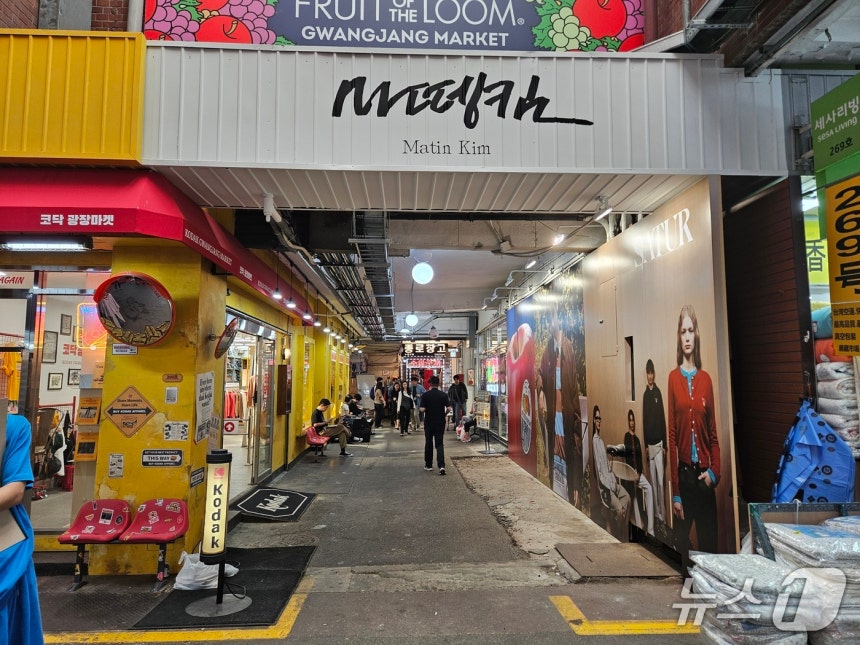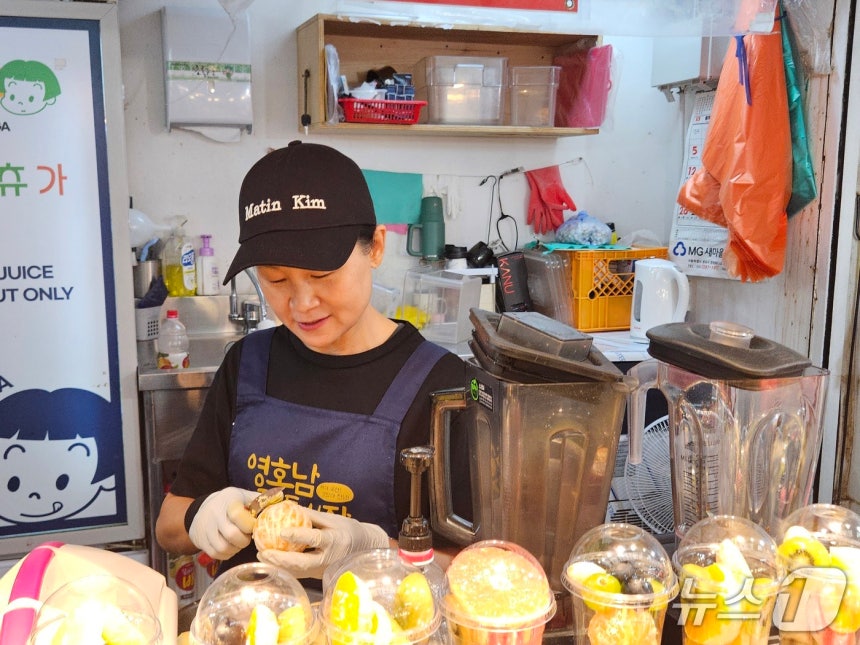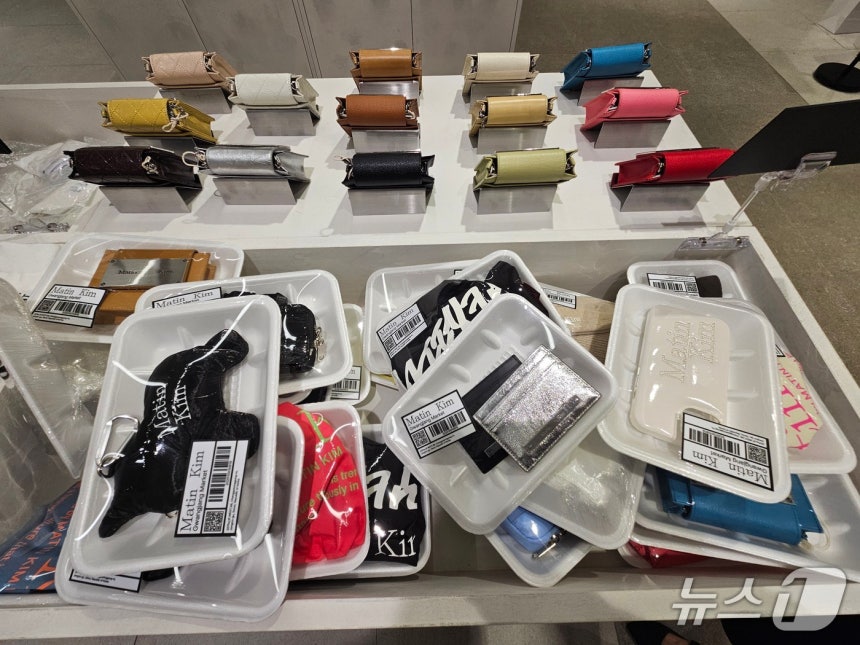Matin Kim's Bold Gamble: Why a K-Fashion Brand Chose a Traditional Market Over Gangnam
In the world of Korean fashion, certain rules have always seemed unbreakable. High-end streetwear brands belong in Gangnam or Apgujeong.
Concept stores open in Seongsu-dong.
Trendy boutiques cluster in Garosu-gil.
But traditional markets? Those are for food vendors and ajummas selling vegetables.
Matin Kim just rewrote the rulebook.
The Move Nobody Saw Coming
On October 1, 2025, Matin Kim opened a store in the most unlikely location imaginable: Gwangjang Market, a 120-year-old traditional marketplace famous for bindaetteok and mayak kimbap. Not a pop-up. Not a temporary installation. A full-fledged retail location.
To understand how unusual this is, imagine Supreme opening a flagship store in Pike Place Market in Seattle, or Off-White launching in London's Borough Market. It simply isn't done. Fashion brands—especially successful ones—don't set up shop between a twisted doughnut stall and a raw beef vendor.
But Matin Kim isn't your typical fashion brand.

From Seoul Streets to Global Recognition
Matin Kim has become one of the most recognizable names in K-fashion, representing a new generation of Korean streetwear that's distinctly local yet globally relevant.
The brand has built its reputation on bold graphics, contemporary silhouettes, and an aesthetic that captures the energy of Seoul's streets. Its Seoul-exclusive lines and Korean Hangul designs have become particularly popular with international tourists seeking authentic K-fashion pieces they can't find anywhere else.
But revenue numbers and trendy designs alone don't explain why Matin Kim would choose a location that defies every conventional retail wisdom.
Why Gwangjang Market?
Gwangjang Market has become one of Seoul's most famous tourist destinations, particularly among international visitors. The narrow alleyways packed with food stalls have appeared in countless YouTube videos, Instagram posts, and travel blogs. It's where foreigners come to experience "real Korea"—the sizzle of bindaetteok on the griddle, the energy of ajummas calling out their specials, the sensory overload of a traditional Korean market.
Yet it's precisely this authenticity that fashion brands have typically avoided. Markets are messy. They smell like food. They're crowded with tourists clutching street food, not shopping bags. They're the opposite of the clean, minimalist aesthetic that defines contemporary retail.
Matin Kim saw opportunity where others saw obstacles.
 \
\
The Collaboration That Changed Everything
Matin Kim’s strategy redefined local marketing. Rather than relying on foot traffic, the brand partnered directly with Gwangjang Market, gifting branded t-shirts and caps to about 200 vendors. Now, the owner of Sunhee’s Bindaetteok and others proudly wear Matin Kim apparel—not as advertisements, but as authentic extensions of the brand’s identity.

A Store That Speaks Market Language
At 38 pyeong (about 1,250 square feet), Matin Kim’s Gwangjang Market store is a lesson in how to design with context in mind. In collaboration with graffiti artist Beommin, the brand created a space that feels both authentically modern and deeply connected to the market’s heritage.
The magic is all in the small touches. Each product is packaged like something you might buy at the market—wrapped like rice cakes or groceries—and the shopping bags mimic the thin plastic ones vendors use every day. The result is a store that feels part fashion boutique, part market stall.
For tourists, it’s an irresistible photo stop. For locals, it’s a surprising source of pride. And for Matin Kim, it’s a brand experience no one else can duplicate.

What Makes Matin Kim Different
This Gwangjang Market move reveals something fundamental about Matin Kim's brand philosophy: a willingness to take risks that other fashion brands won't.
While competitors chase prestige addresses in Gangnam or follow trends to Seongsu-dong's cafe-lined streets, Matin Kim looked at Korea's cultural landscape and asked a different question: Where can we create something genuinely new?
The brand's product lineup at Gwangjang Market reflects this thinking. Alongside bestsellers and seasonal collections, the store features Seoul-exclusive items and Korean-language designs, including limited-edition eco bags with Hangul logos. These aren't products designed for global markets and localized for Korea—they're proudly, unapologetically Korean from conception.
The Future of K-Fashion Retail
Gwangjang Market visitors can now experience both K-food and K-fashion in one destination. But this statement undersells what Matin Kim has actually achieved.
The brand hasn't just opened a store in an unusual location. It's demonstrated that K-fashion brands can compete on cultural confidence rather than just following global luxury playbooks. It's shown that traditional and contemporary aren't opposing forces—they're complementary elements waiting to be combined.
Other Korean fashion brands are surely watching. Will we see more unconventional retail locations? More collaborations between fashion and traditional cultural spaces? More brands willing to embrace the messy, authentic, unpredictable nature of real Korean culture?
The Verdict
Matin Kim's Gwangjang Market location represents more than innovative retail strategy. It's a statement about what K-fashion can be: rooted in tradition while pushing toward the future, locally authentic while globally relevant, commercially successful while culturally meaningful.
The brand looked at a 120-year-old market filled with food vendors and saw not a relic of the past but a canvas for the future. That kind of vision—the courage to see opportunity where others see obstacles—is what separates brands that follow trends from brands that create them.
In choosing Gwangjang Market, Matin Kim didn't just open a store. The brand opened a conversation about what Korean fashion can be and where it can go. And judging by the lines of customers, both local and international, waiting to shop between the bindaetteok stalls and twisted doughnut vendors, the market is answering loud and clear.
Sometimes the boldest fashion statement isn't what you wear. It's where you choose to sell it.